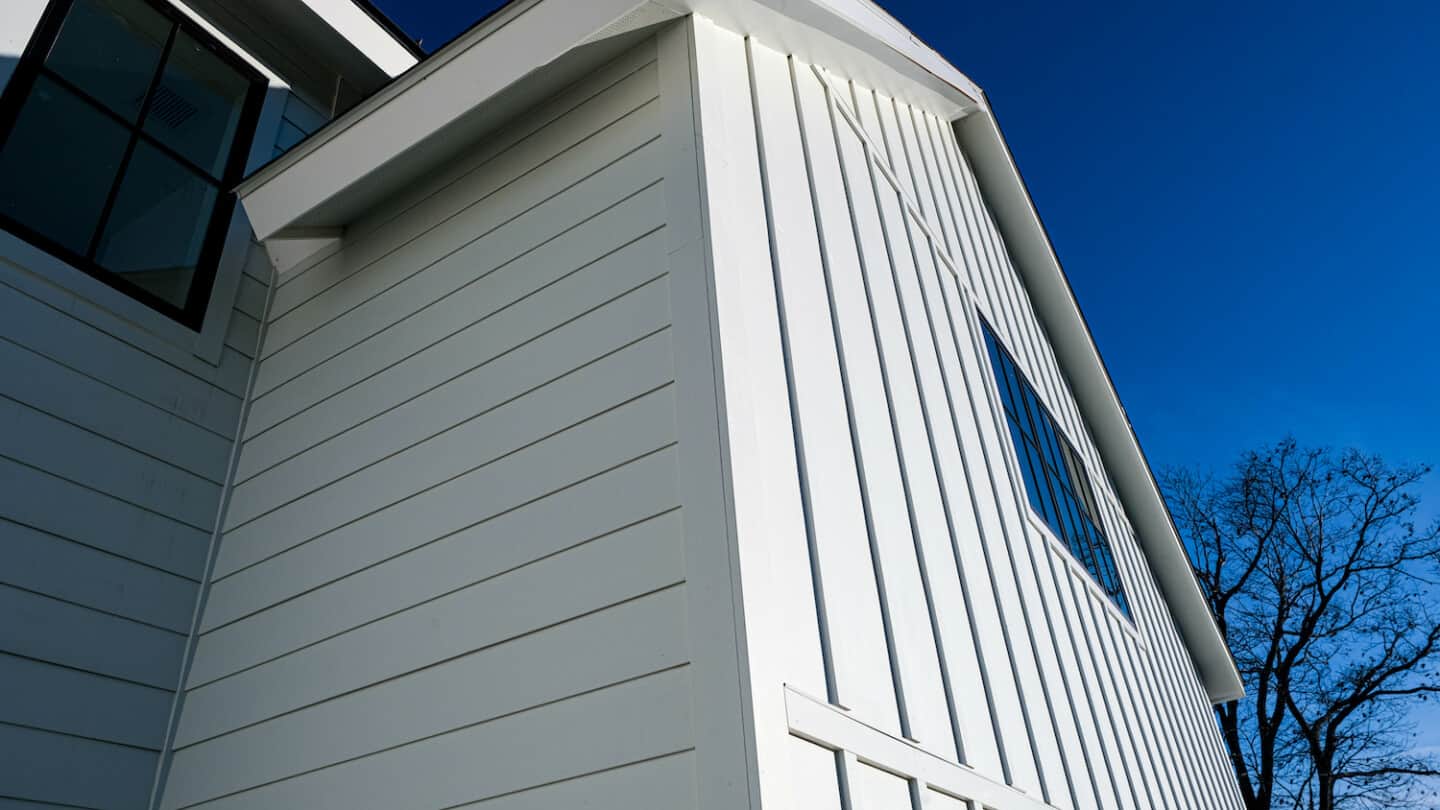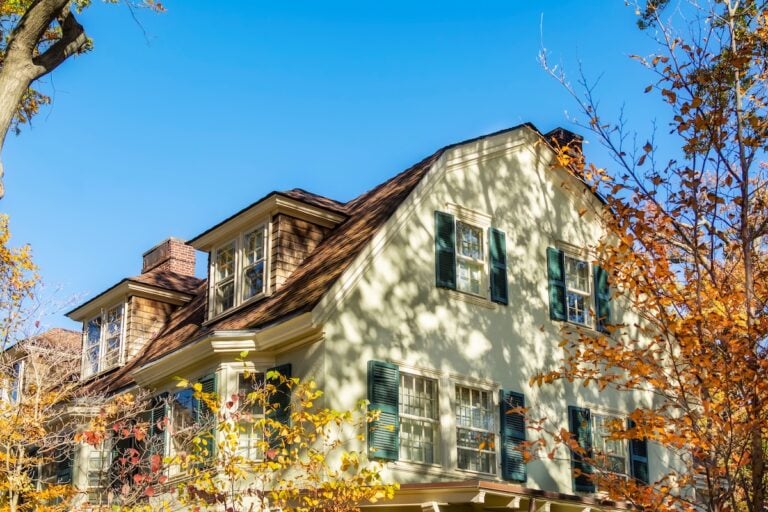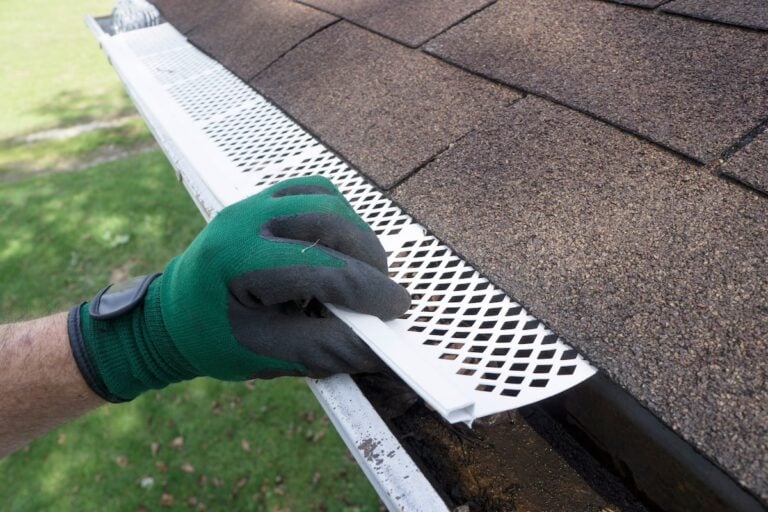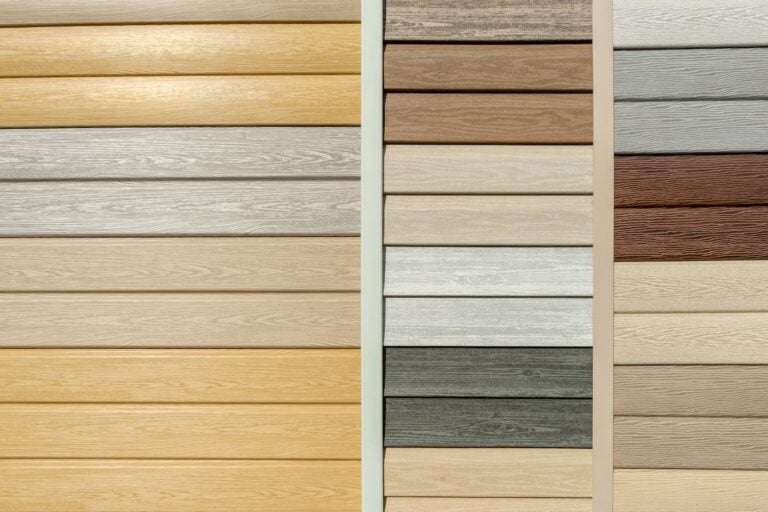James Hardie is one of the single most reputable names in the siding industry. James Hardie offers affordable fiber cement siding options for any size home, providing both exceptional performance and a boost to curb appeal, just like a new roof would.
If you’re considering installing James Hardie siding for your home or business, the best route is to hire a professional contractor you can rely on to get the job done right. But if you’re feeling confident in your own craftsmanship, you can also give do-it-yourself siding installation a shot — it’s actually quite simple.
Find easy-to-follow DIY James Hardie siding installation instructions below:
Why Choose Fiber Cement Siding From James Hardie? ✅
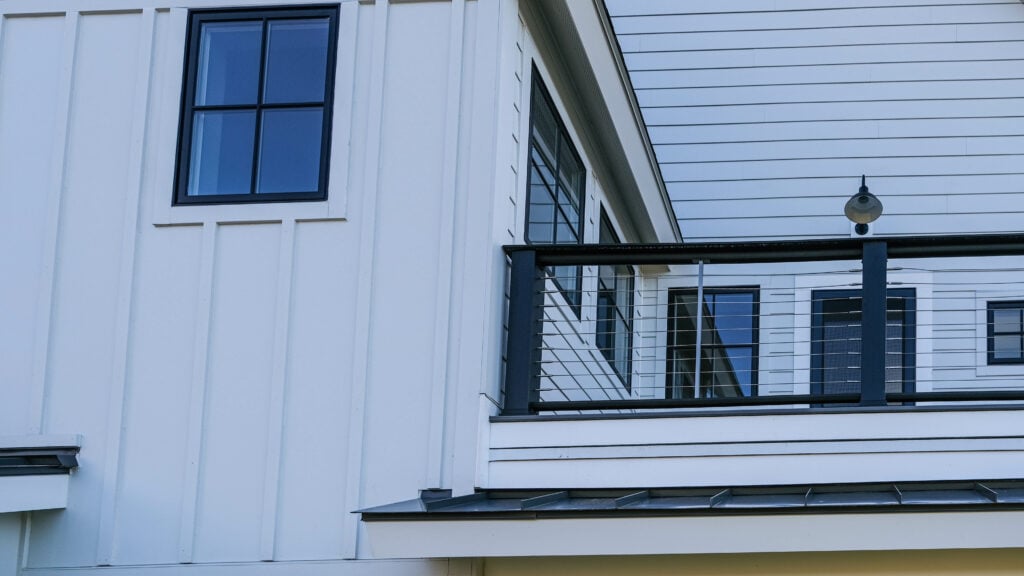
You might be more familiar with the ever-popular vinyl siding styles seen across the nation. But now, fiber cement siding is also gaining traction amongst modern homeowners, and James Hardie siding is considered some of the best. Here’s why:
- Durability – James Hardie brand products are the first of their kind in the industry. They are known for superior durability over vinyl siding, so you can count on this fiber cement siding to withstand just about anything.
- Customization & color variety – Homeowners also love the versatile color and style options offered at James Hardie compared to vinyl siding. You can find James Hardie fiber cement siding in an array of shades to suit the current aesthetic of your home’s exterior or paint it to match your personal style as well.
- Rot & pest resistance – James Hardie fiber cement is also known for extreme water and pest resistance. You won’t have to worry about pesky termites, mold, or mildew anymore.
- Longevity – James Hardie brand products are manufactured to last, with life expectancies upwards of 50 years with the proper care and maintenance.
- Easy maintenance – Hardie board is also incredibly easy to clean; You won’t even need a power washer! Pressure washing your new siding is one of the only ways it can become prematurely damaged. We recommend using a dish soap solution and your standard-grade garden hose to gently wash away any dirt or lingering debris.
- Affordability – Another great thing about Hardie siding is how affordable it is. Although not quite as cheap as vinyl, the added durability and longevity make James Hardie siding a worthwhile investment.
With all these benefits, we can completely understand why you’d want to pursue a James Hardie siding installation. Learn more about the proper safety precautions prior to starting your project.
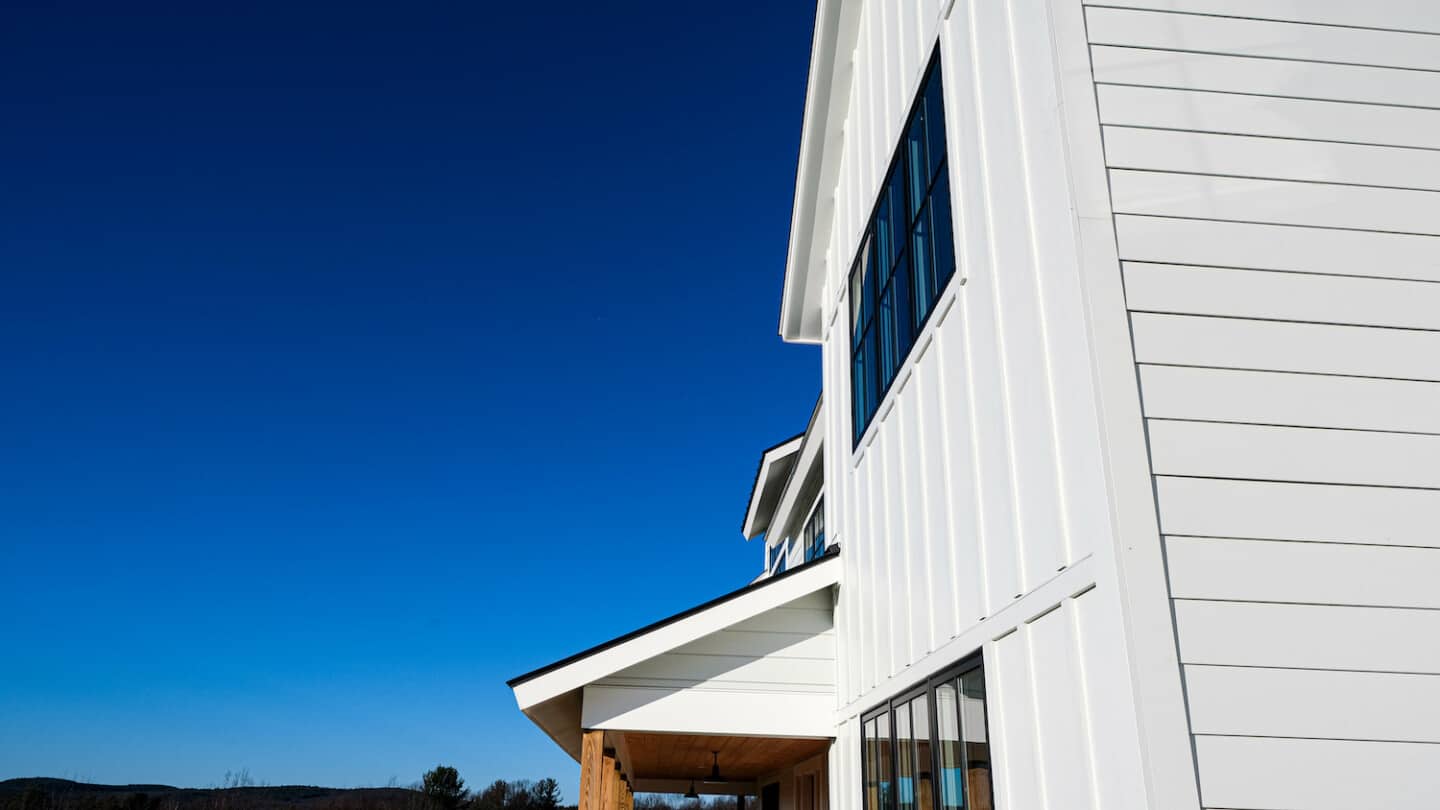
Siding Installation Safety ⚠️
Any home improvement job can pose a danger to homeowners, so it’s important to have the proper safety gear and precautions in place to ensure you’re protected throughout the project. Using the correct tools and storing your James Hardie fiber cement siding properly will also ensure a safe and easy installation.
Protective Gear for DIY Installers 🦺
You’ll need a few pieces of protective equipment on hand to ensure your James Hardie siding installation goes smoothly, including the following:
- Eye protection — Always wear safety goggles when cutting your James Hardie brand products.
- Face masks — Use NIOSH-approved N95 masks only in order to minimize dust inhalation during the project.
- Ear protection — Wearing in-ear earplugs or over-ear noise-canceling headphones while you use circular saws and other power tools can reduce the risk of hearing damage.
- Dust collecting saws — Try to find a circular saw with a dust collector feature since cutting Hardie siding boards can create a lot of dust and harmful debris.
- Clothing — Remember to cover up exposed skin with long, strong, tighter-fitting clothing (loose, baggy clothes can get caught on the saw) and protect your feet with sturdy, durable, closed-toed, and rubber-soled shoes or work boots. Don’t forget to tie back your long hair, too.
- Ladders — Ladder safety is essential during your siding replacement project. Find a trustworthy friend to spot you and hold the ladder in place to keep yourself safe from an all-too-common slip or fall injury.
Tools to Install James Hardie Siding 🧰
Of course, you’ll also need the proper tools to ensure the installation of your new Hardie board siding goes smoothly, such as:
- Hammer
- Fiber cement shears
- Circular saw
- Utility knife
- Zip lock tool
- Tin snips
- Fasteners
- Pneumatic nailer
- Siding nails and roofing nails (either stainless steel, corrosion-resistant, or hot-dipped galvanized nails)
- Siding lap gauge
- Hand tools like a level, measuring tape, chalk line, speed square, etc.
- Ladder
Siding Storage Tips 📦
It’s also crucial to keep James Hardie brand products stored properly to minimize the chances of any damage occurring. Here are a couple of tips:
- Inspect the boards for any damage as soon as they arrive
- Keep your Hardie board siding completely dry until the installation
- Always store James Hardie siding inside and under a waterproof cover
- Store the boards on a pallet that’s placed on level ground to reduce contact with ground moisture
- Follow the storage instructions printed on the product’s bag
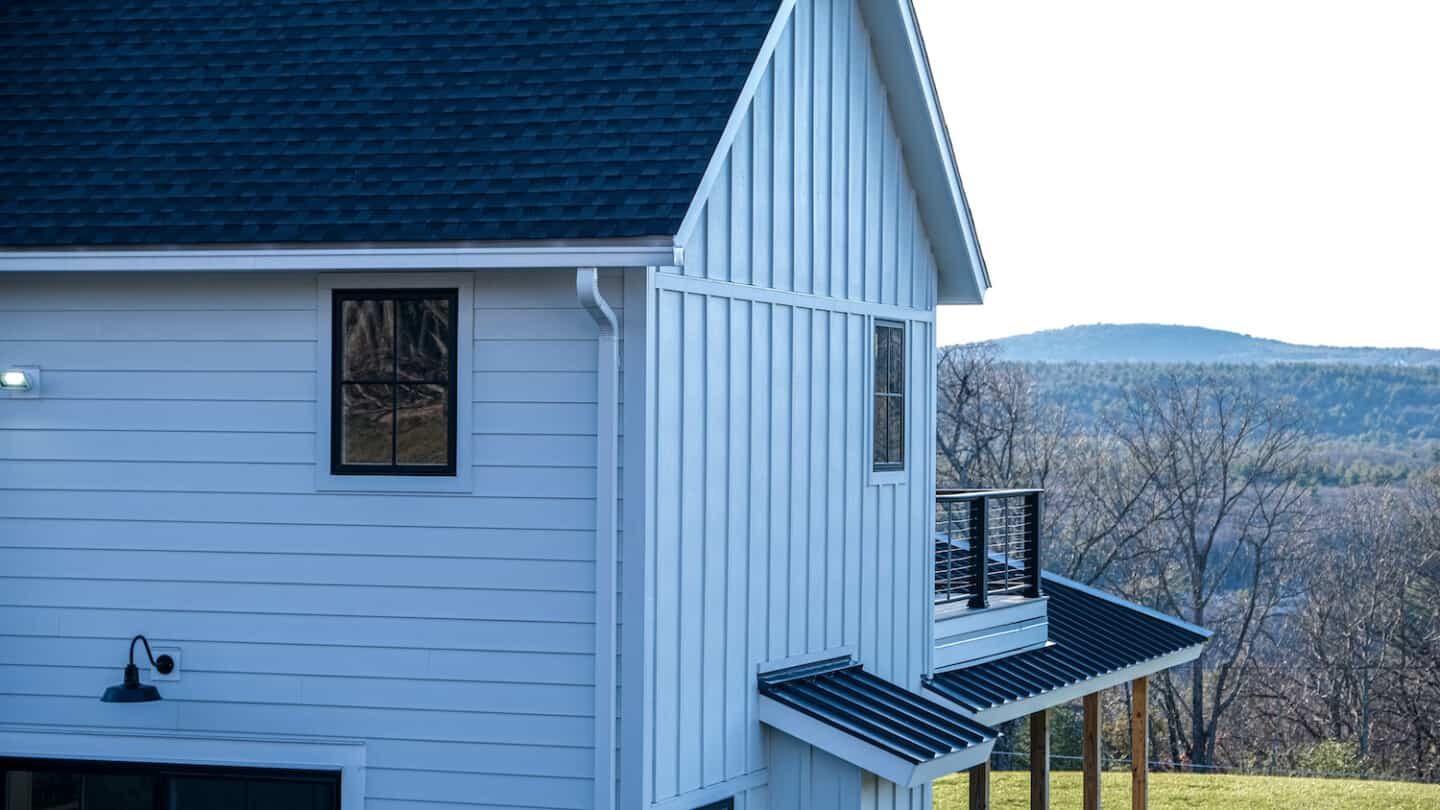
7 Simple Steps for Installing Hardie Siding 🛠
Now that you have your tools and safety equipment in place, you can move on to the hands-on aspects of this project. Follow our 7 simple steps below as well as the brand’s installation instructions to install James Hardie siding easily.
1. Prep Your Project Area
Wondering how is Hardie board installed? It all starts with proper preparation. Before beginning your exterior Hardie board installation, ensure the walls are ready. Sheathe bare walls with plywood, foam, or oriented strand board to create a sturdy base. Then, cover the sheathing with house wrap or felt paper to protect against moisture. Use a chalk line to mark all the studs, ensuring your Hardie plank siding installation is securely fastened. Proper prep makes the installation smoother and more durable.
2. Cut the Siding
Once your project area is prepped, it’s time to cut the Hardie board siding to fit. For fast, precise cuts, use siding shears or a saw. While jigsaws or the score-and-snap method can be used, siding shears and saws are more efficient. Measure carefully and double-check your dimensions to avoid material waste. A perfect fit ensures a seamless finish for your Hardie plank siding installation.
3. Fasten Your Siding
The final step in your exterior Hardie board installation is fastening the siding boards. Align with the studs marked earlier for secure placement. Use a pneumatic nailer or hand nails, following a consistent nailing pattern. For a clean look, blind nail at the top of the boards using roof nails, and face nail at the bottom with siding nails. Secure fastening is key to maintaining the durability and appearance of your Hardie plank siding installation.
4. Install Siding Trim
After the boards are securely fastened, it’s time to install the siding trim. Place the trim on the inside and outside corners of the walls to create a clean and polished look. Leave an extra half-inch of space to allow for caulking, ensuring a watertight seal. This step not only enhances the aesthetics of your siding but also protects the vulnerable corners from weather and wear.
5. Install James Hardie Siding
Now it’s time to secure the James Hardie siding to the exterior of your home. Follow the manufacturer’s installation instructions carefully, as precise measurements and techniques are crucial for a proper installation. Be mindful of spacing and alignment to ensure the siding is both functional and visually appealing. Taking your time during this step will ensure a professional-looking result that lasts for years to come.
6. Paint and Seal
Once your siding is installed, it’s essential to finish it with paint, stain, or sealant. James Hardie products should be painted as soon as possible, but only when the materials are clean and dry. Use high-quality acrylic topcoats designed for home exteriors for the best results. If the siding isn’t pre-primed, apply an exterior-grade acrylic primer before the topcoat. Proper painting and sealing will protect your siding from the elements and maintain its appearance over time.
7. Wrap Things Up
Siding installation can generate a substantial amount of waste, so it’s important to clean up thoroughly after the job is done. Remove all debris, leftover materials, and packaging from the site. If you’re working with a professional contractor, they’ll likely provide access to roll-off dumpsters or other waste removal services. If you’re handling cleanup on your own, consider renting a dumpster to make the process easier. A clean workspace not only looks better but also ensures no hazards are left behind. Taking this final step completes the project and allows you to enjoy your newly installed siding.
Maintenance Tips for Your Siding 💡
Proper maintenance is key to keeping your siding looking great and functioning well for years to come. Follow these tips:
- Regularly inspect your siding for signs of damage, such as cracks, gaps, or discoloration. Address issues early to prevent further problems and costly repairs.
- Clean your siding periodically using a gentle cleaning solution and a soft brush or a pressure washer set to a low setting. This helps remove dirt, mold, and mildew.
- Trim nearby vegetation to prevent branches from scratching or damaging the surface.
- Check and maintain caulking around windows and doors to ensure a proper seal.
With consistent care, your siding will enhance your home’s curb appeal and protect it from the elements.
Common Installation Errors 🚫
If you’re not an experienced contractor, it can be easy to make simple mistakes that will likely lead to further damage down the line for your home. Examples of these common mistakes include:
- ❌ Improper storage – Even the most experienced contractor has made this mistake; always store your fiber cement siding inside and under a waterproof cover. Keep the products away from the ground with a wood pallet to prevent moisture infiltration.
- ❌ Fasteners – James Hardie provides tested and approved methods for fastening boards together. Many homeowners don’t have the same knowledge of a seasoned contractor and miss studs or utilize the wrong nailing pattern.
- ❌ Joint placement – Joining your Hardie board panels together is relatively straightforward, but it can still go vastly wrong and lead to your siding being installed incorrectly. Many inexperienced homeowners leave extra space in places where there should actually be contact between the boards, accidentally creating butt joints if they’re not careful. That’s one thing those Hardie-preferred contractors probably won’t get wrong.
- ❌ Nailing – Another good way to lose track of nails is with those handy air nailers. Although they might be an efficient way to nail things down, even your contractor can miss a spot when they’re moving that fast.
Sit Back, Relax, and Let a Professional Contractor Handle This 😌
James Hardie’s siding products are pretty simple to replace yourself, but any kind of home improvement can be hard work. Why break your back when you can sit back and relax, allowing the professional contractors at Best Exteriors to do the heavy lifting?
We have lengthy experience installing Hardie board siding and are a James Hardie Elite Preferred contractor. That means we can get the job done quickly and without those common mistakes, making your life so much easier. Contact us now for a free estimate and consultation to start your siding replacement with a team you can truly trust.
